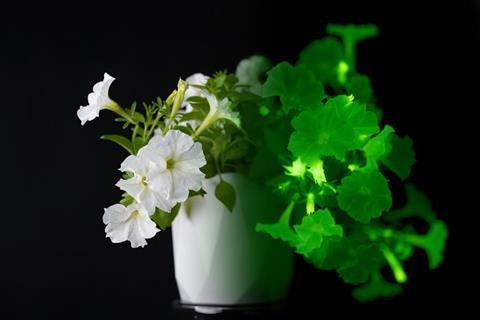In a striking new study published in Science Advances, a team of synthetic biologists led by Karen Sarkisyan at the MRC Laboratory of Medical Sciences, have reported the discovery of multiple plant enzymes – hispidin synthases – that can perform the most complex reaction of the bioluminescence pathway.

This discovery is a significant milestone towards figuring out whether plants can natively produce all the molecules required for light emission. It also means that the glow of bioluminescent plants can now be more closely aligned with their internal biology.
The technology reported in the paper is a hybrid pathway that couples the newly found plant hispidin synthases to other necessary bioluminescence enzymes found in mushrooms. This hybrid pathway allows the subtle inner rhythms and dynamics within plants to be unveiled as an ever-changing display of living light.
Plug-and-play tool
“This technology is a plug-and-play tool to visualise virtually any molecular physiology at the organismal level, completely non-invasively,” Sarkisyan states. His work also revealed that not only does a single indigenous plant gene effectively substitute for two fungal genes, the plant gene is notably smaller and has simpler biological requirements for luminescence. The gene’s reduced size also enhances its usability and flexibility, making it more adaptable for extended applications.

This research was sponsored by Light Bio, a plant synthetic biology company co-founded by Sarkisyan, which aims to transform the horticulture industry with beautiful biotech creations, such as glowing plants. The first product to exploit the hispidin-based pathway is Firefly Petunia, so named because its bright light-emitting flower buds resemble fireflies.
Molecular physiology
Beyond the advances in aesthetics that luminous vegetation may provide to plant-lovers, the foundational science offers profound insights into plant molecular physiology. By enabling continuous monitoring of plant responses to various stresses, such as drought stress or attacks by pests, the technology may lead to significant progress in fields such as crop development and disease resistance.
Sarkysian’s bioluminescence pathway has been replicated in other species including yeast and even in human cells. “We love growing our bioluminescent petunias, they are truly magical. But beyond aesthetics, understanding how we can adapt self-sustained luminescence to monitor disease progression and assist in the screening of drug candidates will make this technology even more impactful”, says Sarkysian.







No comments yet